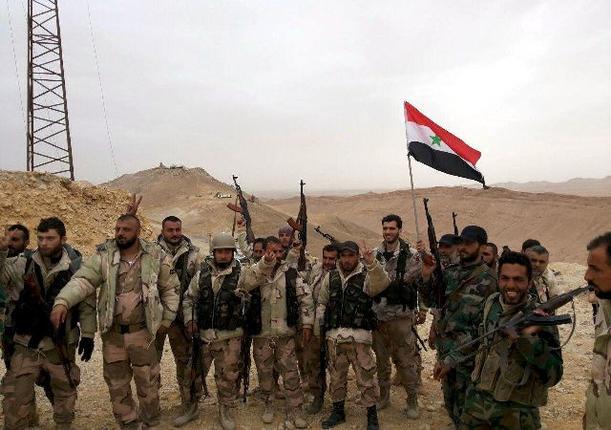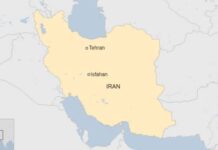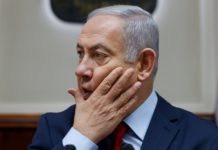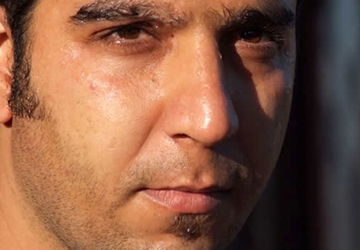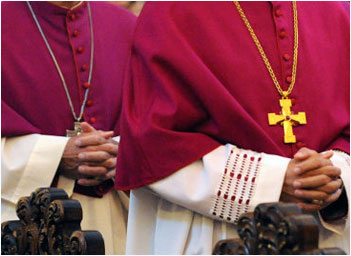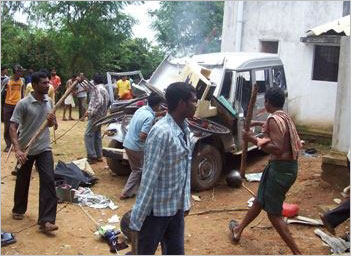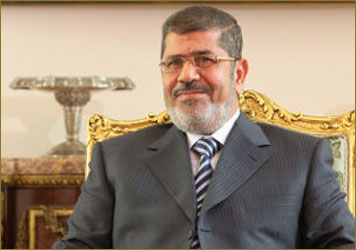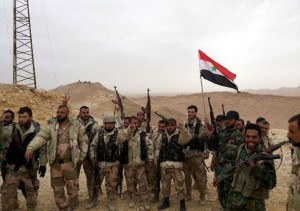 Syrian government forces backed by Russian airstrikes drove Islamic State fighters from Palmyra on Sunday, ending the group’s reign of terror over a town whose famed 2,000-year-old ruins once drew tens of thousands of visitors each year.
Syrian government forces backed by Russian airstrikes drove Islamic State fighters from Palmyra on Sunday, ending the group’s reign of terror over a town whose famed 2,000-year-old ruins once drew tens of thousands of visitors each year.
Government forces had been on the offensive for nearly three weeks to try to retake the central town, known among Syrians as the “Bride of the Desert,” which fell to the extremists last May. Their advance marks the latest setback suffered by IS, which has come under mounting pressure on several fronts in Iraq and Syria in recent months.
Syrian state TV quoted an unnamed military official as saying that “the armed forces and groups of popular defense committees have fully taken control of Palmyra.” The popular defense committees are militias allied with the government.
The military official added that troops are now dismantling explosive booby traps planted by IS.
The advance marks both a strategic and symbolic victory for the government. Its forces are now better positioned for a future advance on Raqqa, the IS group’s de facto capital, and the eastern city of Deir el—Zour, which is mostly held by the extremists.
IS drove government forces from Palmyra in a matter of days last May and later demolished some of the best—known monuments in the UNESCO world heritage site, including two large temples dating back more than 1,800 years and a Roman triumphal archway.
The extremists have destroyed a number of historical sites across their self—declared caliphate, viewing such ruins as promoting idolatry.
IS also demolished Palmyra’s infamous Tadmur prison, where thousands of government opponents were reportedly tortured.
Syrian Culture Minister Issam Khalil hailed the recapture of Palmyra as a “victory for humanity and right over all projects of darkness.”
Maamoun Abdulkarim, director of the government’s museums and antiquities department in Damascus, said damages to the Great Colonnade at Palmyra are minor. “We will rebuild what you have destroyed,” he said, addressing IS.
Syrian state TV interrupted its normal programs to air a documentary about the town and its archaeological sites. “It’s 10 in the morning Palmyra time. Our morning is victorious,” a TV announcer said.
Later a TV reporter spoke live from inside Palmyra, showing troops in the center of the town. Some of the nearby buildings had been reduced to rubble.
The Britain-based Syrian Observatory for Human Rights confirmed IS had lost the town, saying there were many deaths among the extremists. It added that some IS fighters withdrew from Palmyra toward the town of Sukhna and other areas in Homs province.
The Observatory’s chief Rami Abdurrahman said three weeks of fighting killed more than 400 IS fighters, as well as 180 troops and pro-government militiamen. Residents told The Associated Press that IS evacuated all of Palmyra’s civilians to other territories under its control before government forces entered the city.
Government forces have advanced on a number of fronts in recent months, aided by a Russian air campaign. Moscow announced earlier this month that it would begin drawing down its forces, but said it will continue to target IS and other extremist groups.
Russian jets carried out 40 air sorties near Palmyra in a 24-hour period, hitting 158 targets and killing more than 100 militants, Russia’s defense minister said Saturday.
The government has also benefited from a U.S. and Russian-brokered cease—fire that has sharply reduced violence across the country since it took effect last month. IS and the al-Qaeda-affiliated Nusra Front are excluded from the agreement. The truce is intended to support peace talks underway in Geneva that were adjourned last week.
Syria’s conflict began a little more than five years ago with mostly peaceful protests against the Assad family’s four—decade rule. A fierce government crackdown and the rise of an insurgency plunged the country into a full—blown civil war that has killed more than 250,000 people. AP



